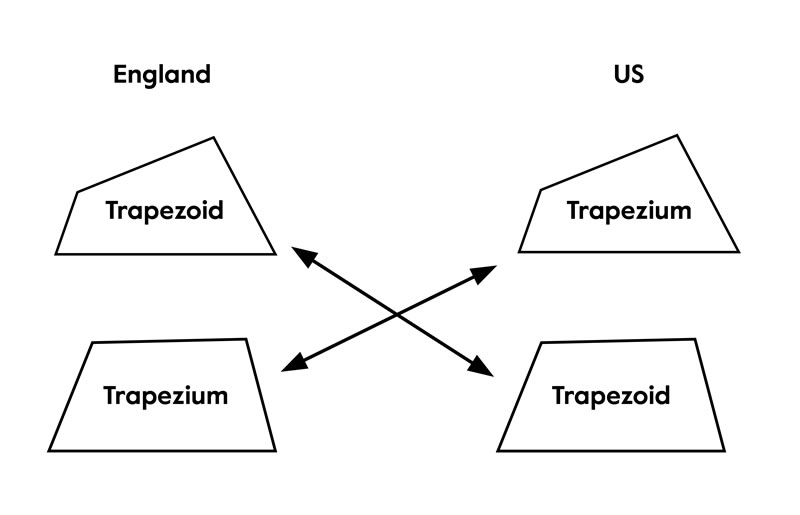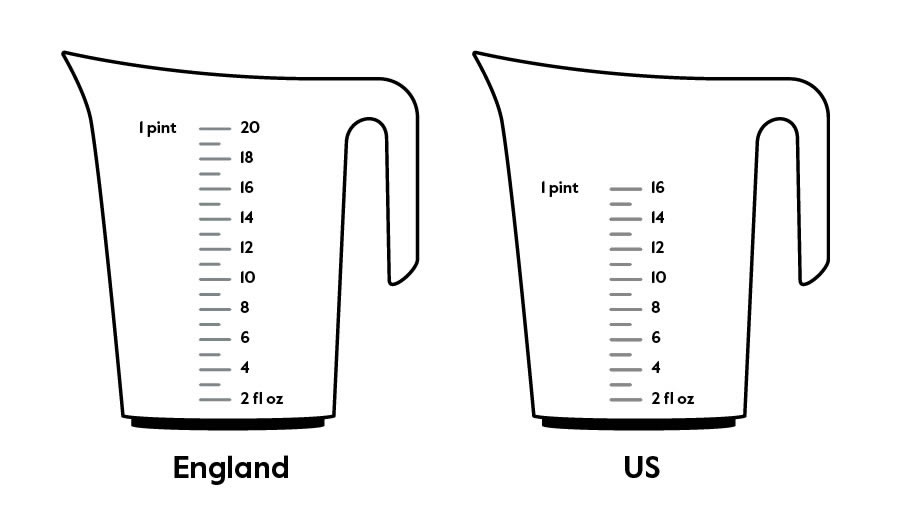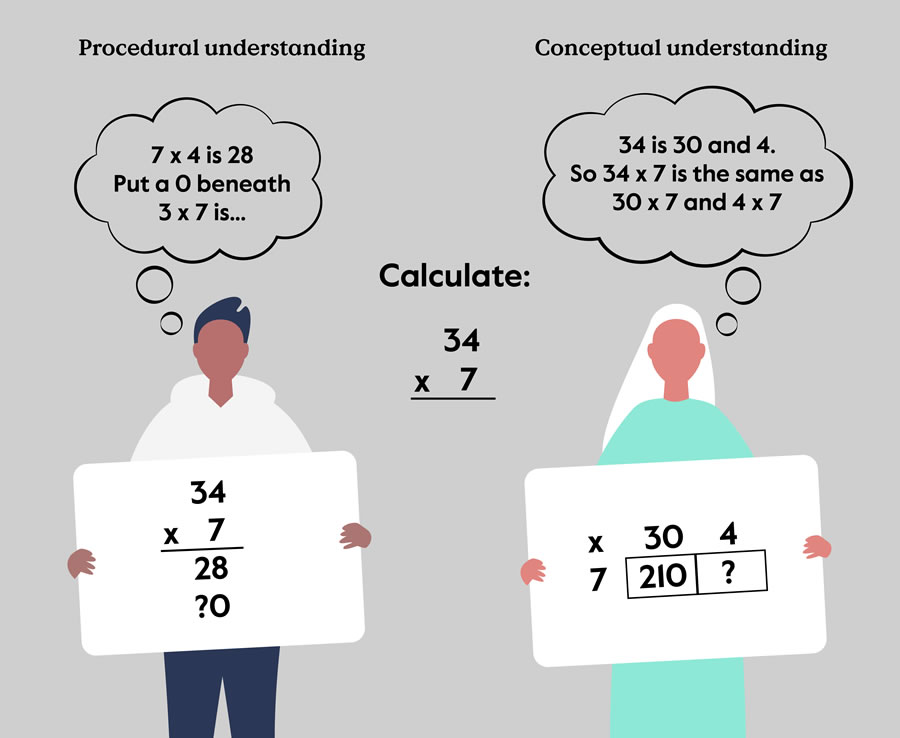I am sure that no subject loses more than mathematics by any attempt to dissociate it from its history.
Glaisher, in The British Association, 1889, p. 466
Despite its age, this statement is as true today as it was in 1889. To understand a current curriculum, it is also necessary to understand the history that led to its development. This is because any attempts to write or update curricula, whether in mathematics or any other subject, can be influenced by many things, including previous versions of the curriculum, research, and political initiatives. Developers may decide to continue with previous decisions or to change things that they do not agree with.
The lens of history
We have explored the importance of this historical understanding when carrying out some recent research into the differences in mathematics curricula and teaching approaches between England and the United States (US).(2) We adopted a largely historical approach so that we could describe and explain how teaching, learning and assessment have changed over time within mathematics education.(1), (2)
We identified areas of shared and contrasting practice across the two countries. By considering how this practice has developed over time, we were able to reflect on the mathematics teaching and curriculum approaches that each country uses.
Using timelines
We illustrated previous initiatives on timelines(2), which gave us a lens to view current maths education practices and made it easier for us to identify shifts, patterns and themes more effectively when writing about them.
Timelines increase understanding and allow information to be presented visually in a chronological sequence. This allows people to identify and understand different trends such as changes, recurring events, as well as key events of historical, social, and scientific significance.
Our timelines show historical storylines and chronicle the sequence of events and thinking that has shaped the development of mathematics teaching, learning and assessment in England and the US. We used them to show the core set of concepts and ideas that represent the evolution of thinking in the two countries. The timelines allowed us to represent key perspectives on theoretical debates, mandates, initiatives and reform movements, standards, bodies, organisations, councils, projects and strategies, as well as key publications, reviews, White Papers and Acts at a national level in meaningful, visual ways.
These timelines are intended to provide a record of the major changes to mathematics curricula and teaching approaches in the two countries. We hope that readers will be able to use the timelines to inform their own teaching, curriculum design, or research about the two countries.
A partial picture
Anyone using the timelines should note that the narrative that they create is not as neat as it might appear at first glance. They do not capture the more local issues that sometimes obscure the nationwide ones. For example, the US timeline only presents the story of US mathematics at national level. But there are also many stories about mathematics in each state, as the state governments make most of the decisions about education. Individual states may not have adopted particular initiatives we have shown in the timelines, or they may have adapted them for their own circumstances.
The reader should also note that both countries are influenced by international practices, as well as their own history. There may also be significant differences between education policy documents and published curricula and what actually happens in classrooms. Finally, there are many differences between schools, such as the expectations they have for students or the textbooks and other teaching materials they may use. There may also be differences within schools, particularly when students are placed into different ability groups (sets or streams in England, tracks in the US).
Mind the (language) gap
The last thing that the reader should note is that there are differences in the terminology that is used in England and the US. Some words only have different spelling, such as maths (England) and math (US) or metre (England) and meter (US). Others are harder to spot and could cause more problems. For example, the meaning of trapezium and trapezoid are swapped in the two countries, and the size of some imperial measures (e.g., pints) is different.

Diagram showing that the meaning of trapezium and trapezoid is swapped in England and the US

Jugs with scales showing the different sizes of pints in England and the US
The most important difference for understanding the timelines is the way that the two countries use the words curriculum and standards. In England when we talk about curricula or the national curriculum we usually mean lists of content that students should know and skills that they should be able to demonstrate (these lists are called programmes of study in the national curriculum and other documents may call them learning objectives). In the US, these lists of content are called standards and the closest US equivalent to the national curriculum in England is the Common Core State Standards. The word curriculum is used for the plans that describe how students learn the content from these standards. It can also includes the text books and other resources that may be used.
What have the timelines told us?
We have used them to make a number of observations. One of the most important is that curriculum change in the US has often been driven by debates about whether curricula should favour procedural skills (knowing methods such as long multiplication) or conceptual understanding (understanding the mathematics behind those methods). An example of the difference between these two types of understanding is shown below. In England, the maths associations and different curriculum projects drove curriculum change in the 1950s and 1960s, but that since the 1970s, curriculum change has increasingly been driven by government policy.

The timelines also show that the two countries are different in when they moved towards and away from centralised curricula. The Common Core State Standards (US) were the first widely adopted standards and were introduced in 2010. The national curriculum (England) was introduced for all state schools (government or local authority funded schools; public schools are the US equivalent of state schools) in 1989. Since 2014 only some state schools have to follow it, although most still do.
Another observation is that the development of the Common Core State Standards (US) was largely driven by research and evidence. The development of the national curriculum for mathematics (England) and subsequent changes to it were driven by government, although educationalists and researchers were involved in the development and some subsequent revisions were influenced by research.
References
1↩ Majewska, D., Rushton, N. & Shaw, S. (2022). How did we get here? Timelines showing changes to maths education in England and the United States. Cambridge University Press & Assessment Research Report. Cambridge, UK: Cambridge University Press & Assessment.
2↩ Shaw, S., Rushton, N. & Majewska, D. (2022). Tracing the trajectory of mathematics teaching across two contrasting educational jurisdictions: a comparative analysis of historical and contemporary influences. International Education Journal: Comparative Perspectives 21(1), 41 - 60.